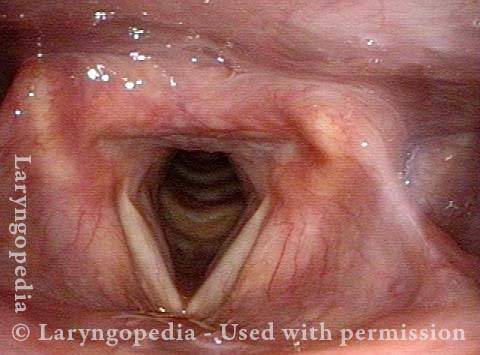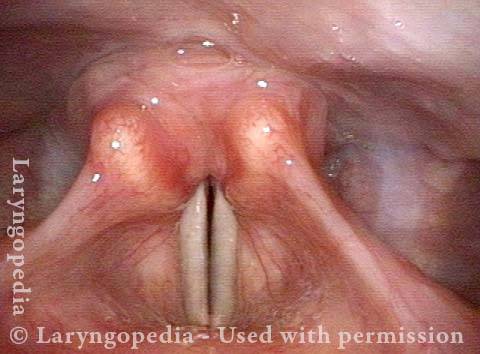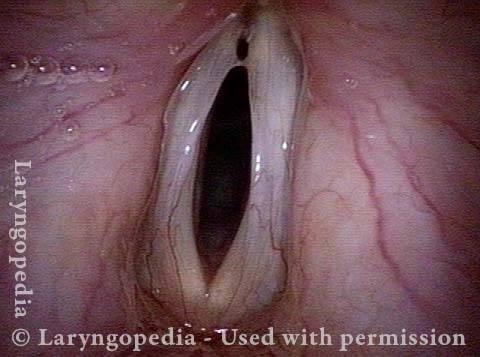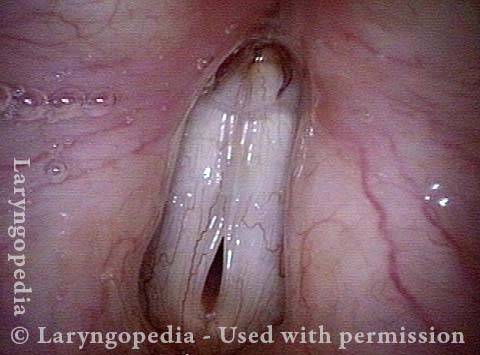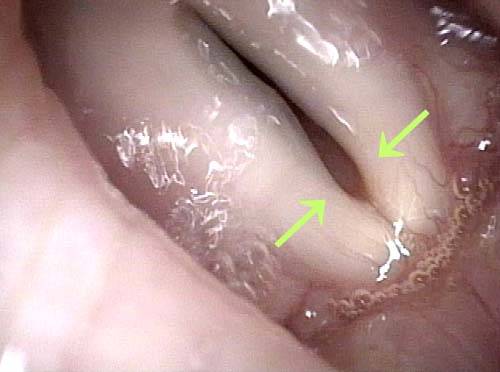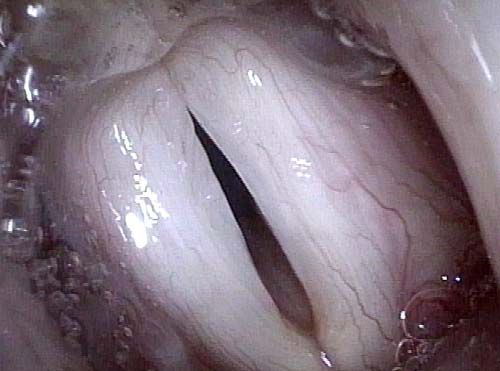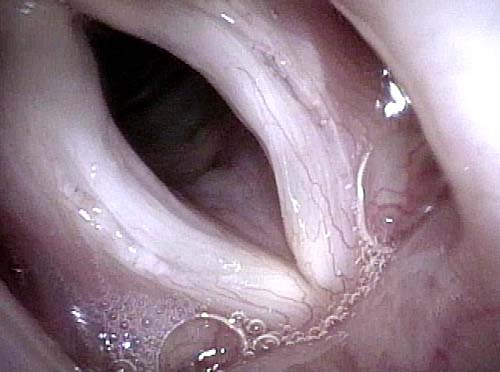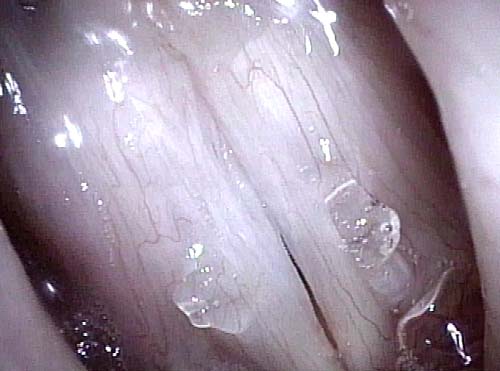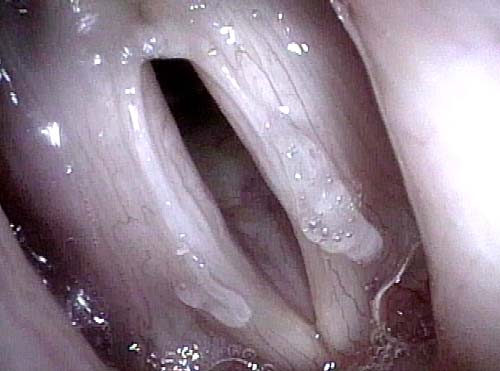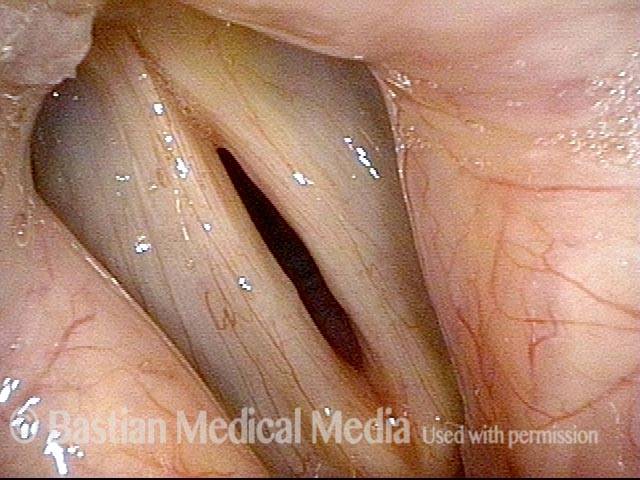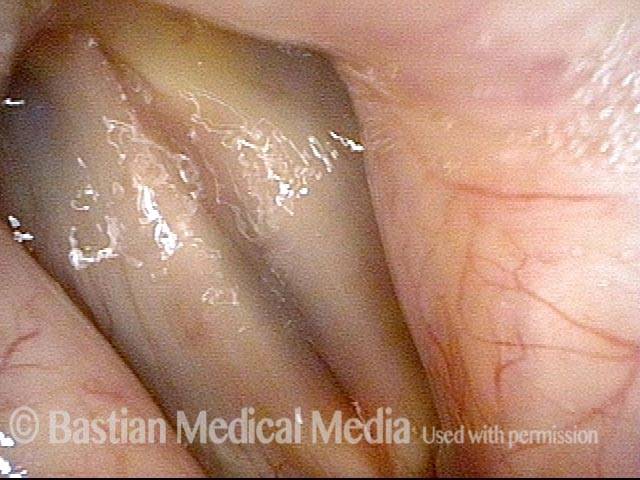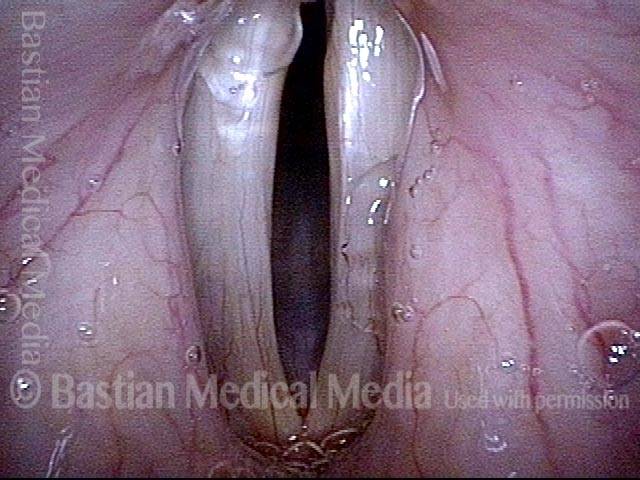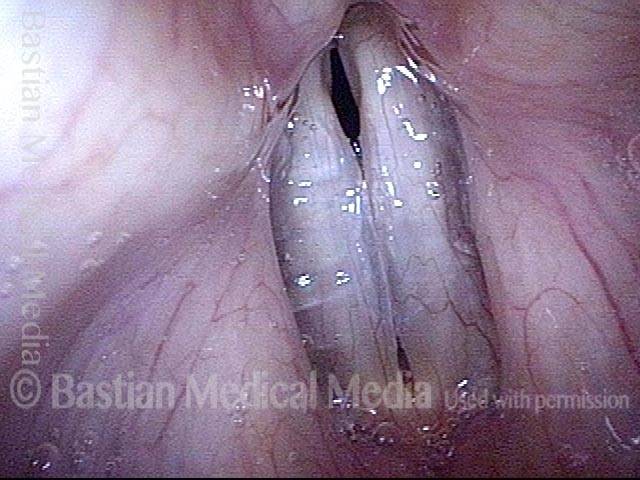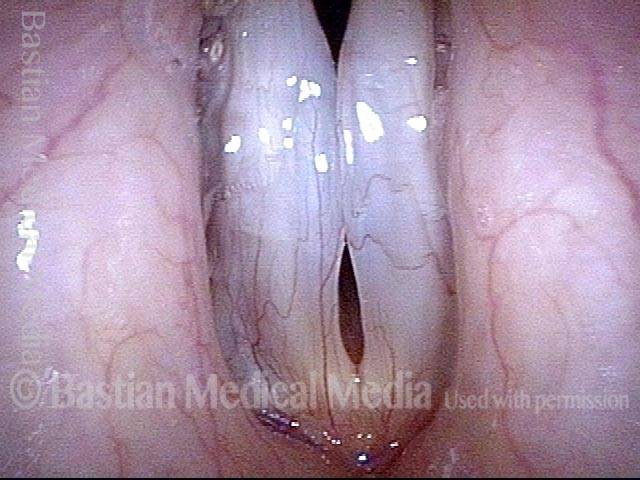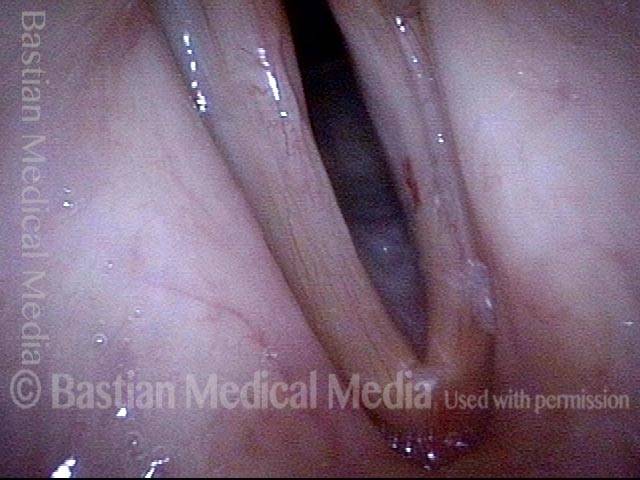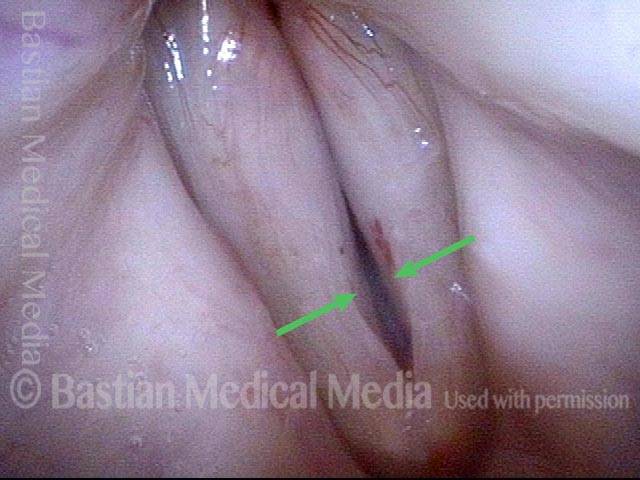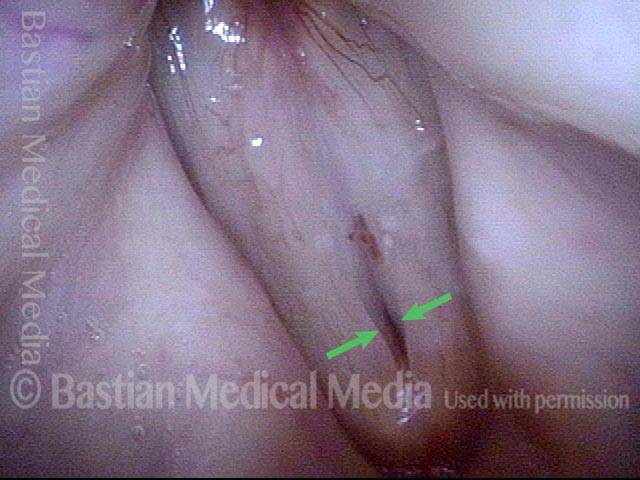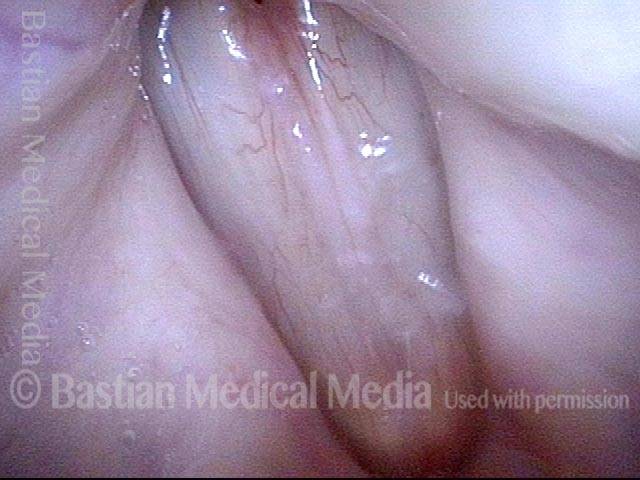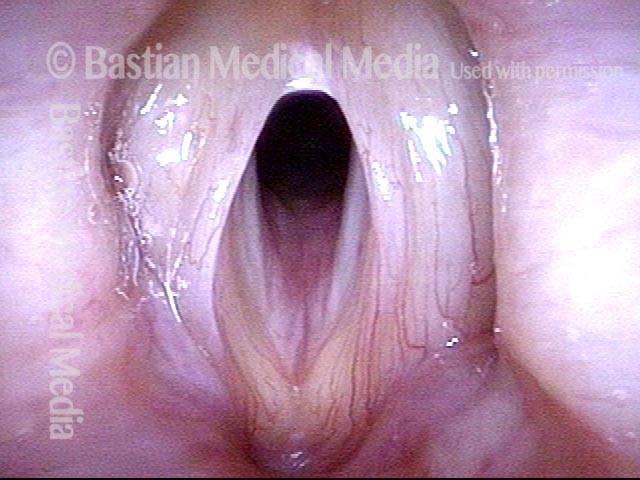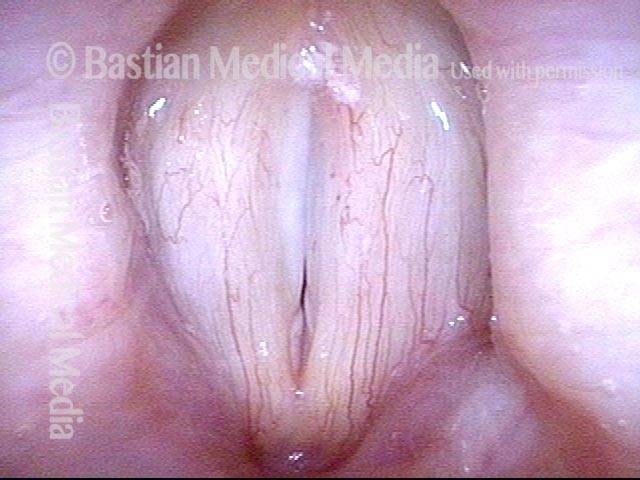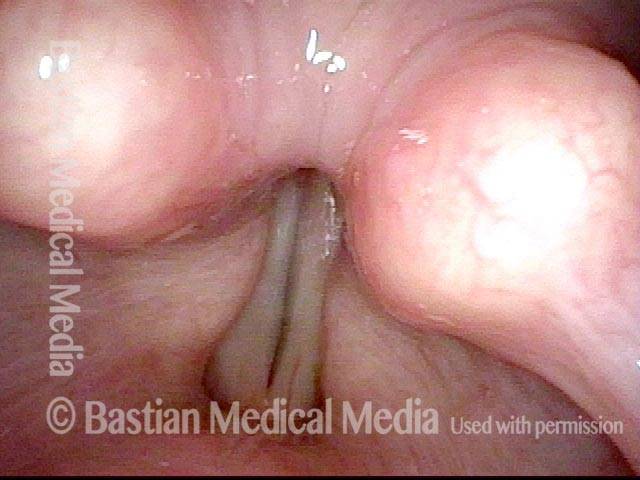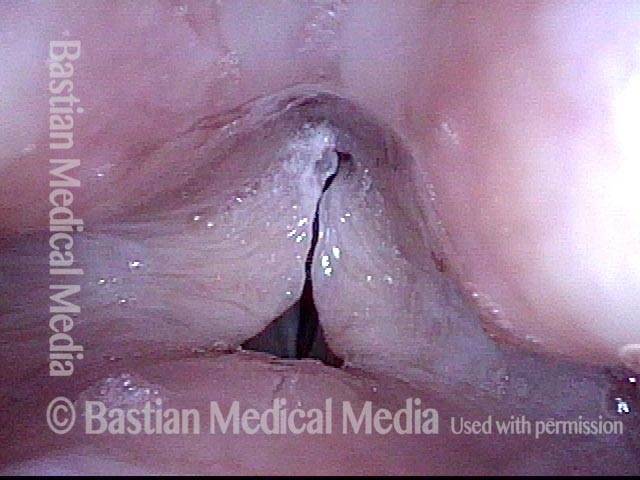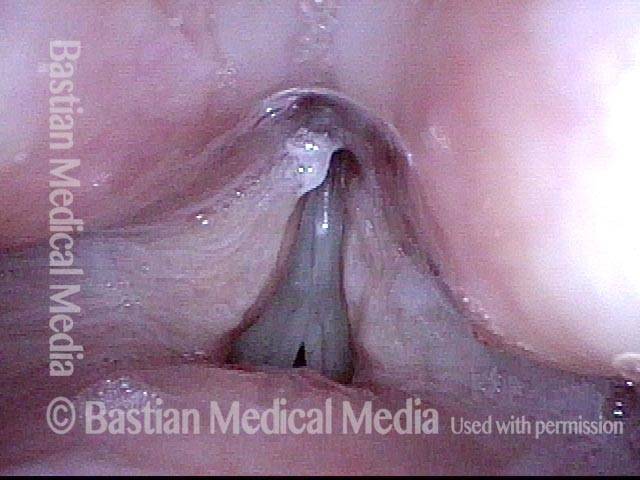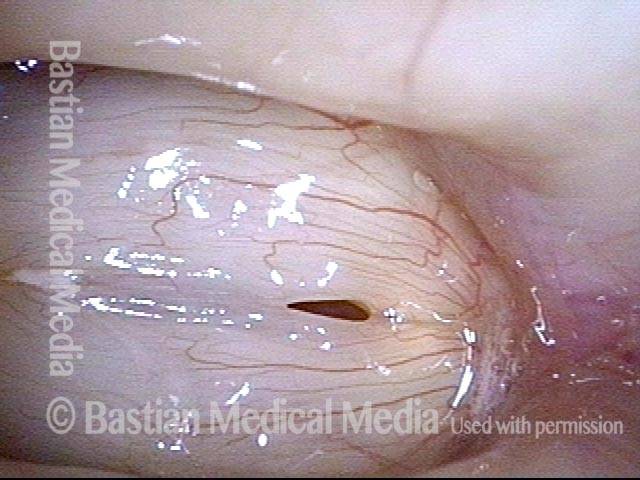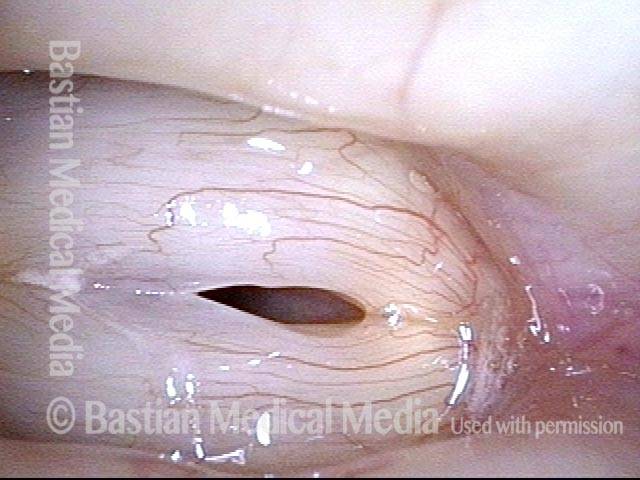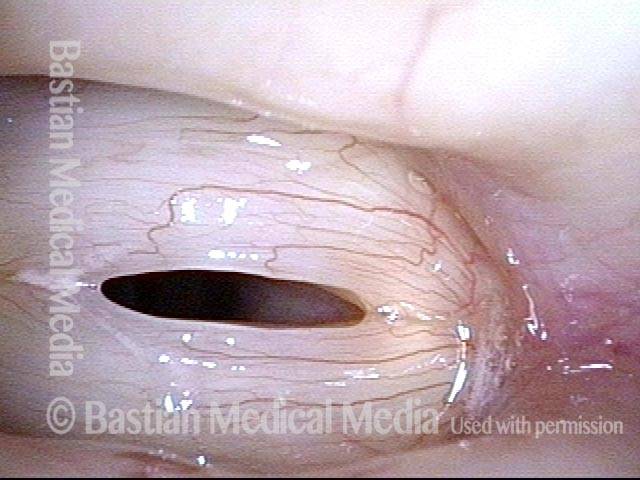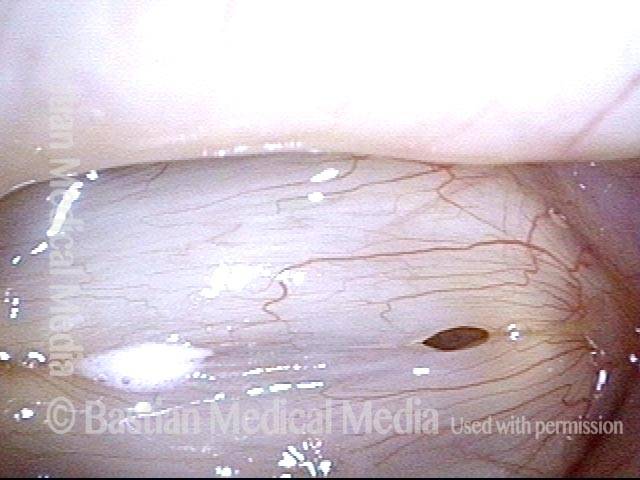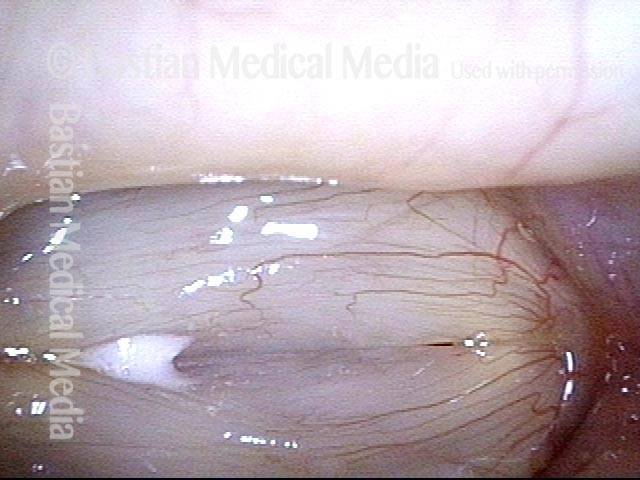Flaccidity of the Vocal Cords
Vocal cord flaccidity correlates to some degree with atrophy of the muscle comprising them. Bowing also accompanies flaccidity most of the time. It is possible to have bowed/slender vocal cords that are not particularly flaccid—they still vibrate with good firmness and resilience.
Similarly, vocal cords that appear to have good bulk (and are not atrophied) can nevertheless have a flaccid vibratory pattern. Photos below show the visual findings of flaccidity as distinct from bowing and atrophy. Voice manifestations of flaccid vocal cords are similar to bowing in cases such as:
- Loss of “edge”
- Reduced ability to be heard in noisy places
- Reduced vocal endurance (The voice becomes fuzzier or raspier and more air-wasting as the day progresses and the atrophied muscles tire).
A key visual finding of vocal cord flaccidity
This seventy-something woman has noted a weak voice for at least a decade. She came for evaluation due to what seemed like further reduction of strength following a bout of laryngitis.
At her evaluation, her faintly fuzzy speaking voice can “pass for normal for age” but when asked to project, her voice manifests a lack of edge and power. At low pitch there is one moment of “luffing.” From her history and vocal phenomenology, vocal cord bowing is suspected.
